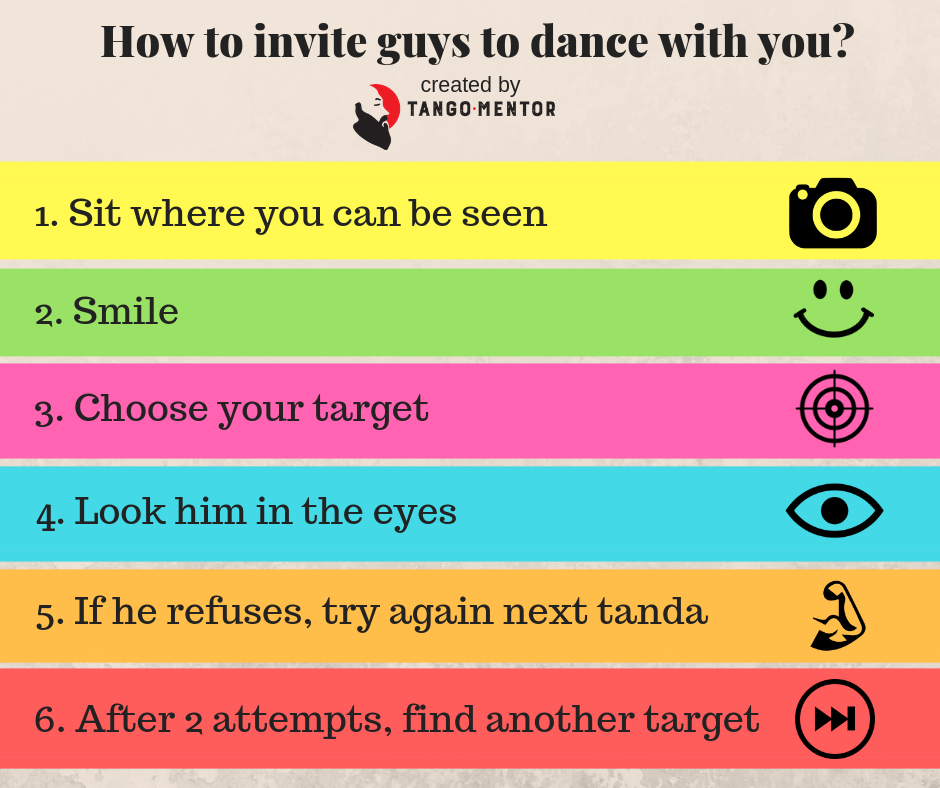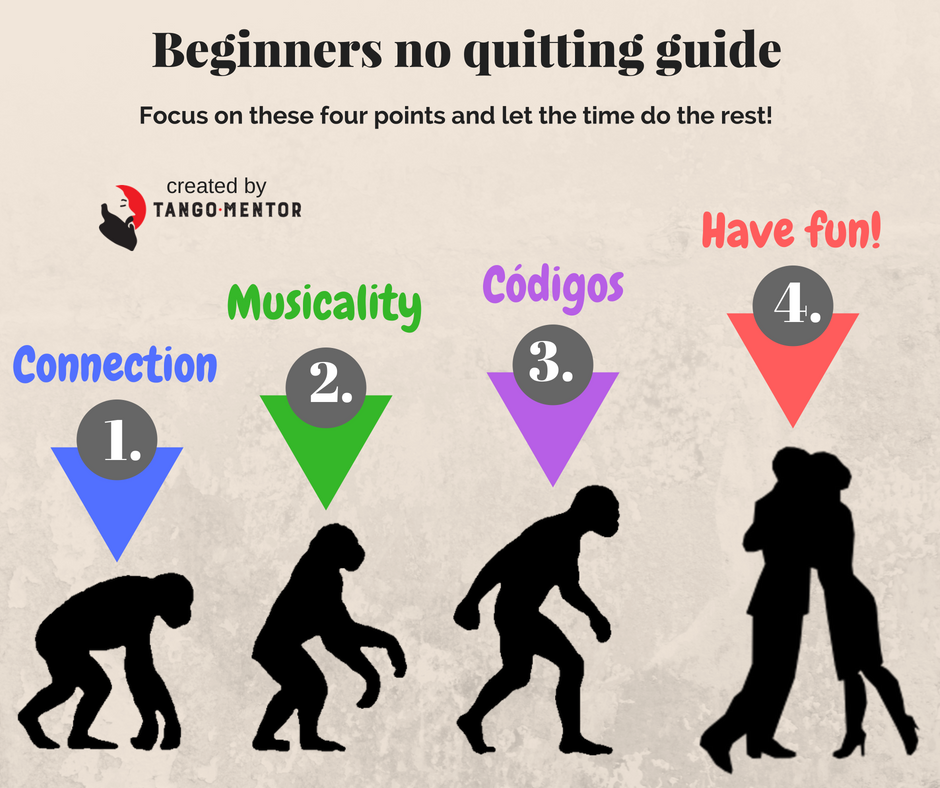 There is a huge number of milongueras who feel uncomfortable in the game of invitations. Even more consider saying ‘no’ to invitations an impossible mission.
There is a huge number of milongueras who feel uncomfortable in the game of invitations. Even more consider saying ‘no’ to invitations an impossible mission.
If you are one of these, this article will give you some ideas how it should be done. If, on the other side, you are a man, this article will maybe explain some behaviors of the ladies you invite, it should give you clues how ladies are avoiding your invitations.
Last week, when I published the article with mirada tips from experienced milongueras, there was an interesting debate on Facebook over should ladies refuse invitations…
I completely understand the frustrations of beginners, but on the other hand, nobody should be obliged to accept invitations. Part of the idea of inviting is the possibility to be refused… and you should accept refusal without personal feelings.
Of course, it is a kind of a social responsibility to dance with beginners in small local milongas or practicas, but when it comes to big international events, I don’t think there is such obligation.
There is also this small terrible group of men who don’t put forth the effort to improve their dancing. They neither take classes, nor try to replace their lack of talent with hard work… and many of them don’t even care and get upset when refused. In those cases, I believe that ladies who care about the development of their tango community have an obligation to refuse to dance with those so-called dancers.
NOTE: I know that there are ladies who accept even these dancers, just because there are no other men in their community. To them I would say, “Please, if you want a healthy community – motivate some friends, neighbors or relatives to start dancing tango…” I strongly believe that pity dances are damaging the community and your dancing as well.
[Tweet “If he is disrespectful enough to approach and ask verbally, you have every right to return “the favor” in similar manner.”]
So, the question: “How to refuse invitations?” I made a list of 10 ways to do it. Please be aware that they are not ready-made solutions – consider them as ideas that can work only in certain situations.
1. Leave the milonga – If there are no good partners at all, it may be better to leave the milonga. It’s better to leave than have frustrating experience. Go and spend some time with your non-tango friends.
2. Get some drinks – Visit the bar at the back of the milonga. If there are no good partners available, consider leaving the room. Go to the bar and socialize a bit – return when the tanda finishes and the good dancers are available again.
3. Talk to your friends – Although I don’t like when people are talking too much at milongas, I believe that it is a good way to avoid unwanted invitations. Talking is a good excuse to avoid cabeceo if you feel uncomfortable to do it in a direct way.
4. Don’t look at them – Avoiding eye contact is the first signal that you don’t want to dance with them, and those partners who are respectful will understand your message.
5. Look away – If he catches you with his mirada and you still don’t want to dance with him, show no reaction. Just look away.
Let me add something here! I always respect the women who are confident to look me at the eyes and turn the head. This means “I’ve seen you, but I don’t want to dance with you!” This gives me freedom to search for another partner instead of asking myself, did she notice me? Should I try again?
6. Take off your shoes – This is obvious signal: “I don’t want to dance anymore – I am tired.”
7. Say “I am tired!” – If the partner doesn’t respect you and approaches to ask you verbally – you can always say that you are tired.
Don’t feel guilty. If he is disrespectful enough to approach and ask verbally, you have every right to return “the favor” in similar manner.
Hey, sorry to interrupt…
Do you like reading my articles? If you do please consider a small contribution to the existence of this blog.
I don’t sell a book or run ads: I share these articles for free. Unfortunately I also have to pay my bills, so if you see value in my work please consider a small donation/gratuity (the same way you tip your favorite bartender).
From my heart to yours!
Ivica
Securely processed via PayPal
8. Simulate injury – Say “I injured my ankle!” Avoid dancing the same tanda with another partner if you don’t want to offend the man you just rejected.
9. Say “I am sorry, I promised this tanda to someone else” – … and you can continue making mirada, searching that “someone else.”
10. Say “I don’t want to dance with you” – NO! I would never recommend this – avoid saying this by all costs. There is too much ego in tango and people get offended.
I believe that this list can be longer. Do you have some experience that can be added to this list? Share it in the comment section so we can all benefit from it.
And also, don’t forget to share this article with your tango friends. I am thankful for that.

 You can’t dance tango if you can’t invite someone to dance with you. Men do invitations by cabeceo, women invite by making miradas. Sounds simple, but we are not simple machines and when you get in the complex world of milonga it can get really messy.
You can’t dance tango if you can’t invite someone to dance with you. Men do invitations by cabeceo, women invite by making miradas. Sounds simple, but we are not simple machines and when you get in the complex world of milonga it can get really messy.
 No matter if you are just one of many beginners or have somewhat experience, you should not neglect what is important in your dancing. Getting back to the basics is always a good idea.
No matter if you are just one of many beginners or have somewhat experience, you should not neglect what is important in your dancing. Getting back to the basics is always a good idea.